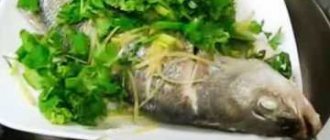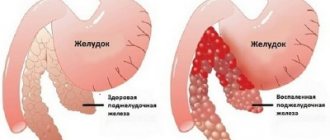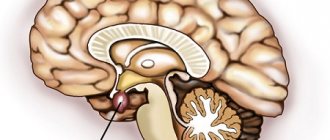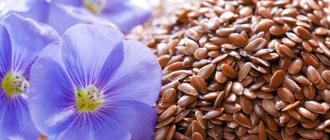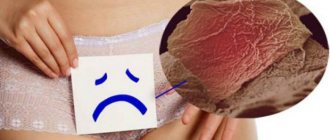Using medicinal herbs for cholecystitis and pancreatitis, you can speed up the process of organ recovery after an exacerbation, and during the period of remission, create the prerequisites for preventing an attack. This effect is achieved due to the choleretic, hepatoprotective, anti-inflammatory and other beneficial properties of plants.
Using medicinal herbs for cholecystitis and pancreatitis, you can speed up the process of organ recovery after an exacerbation, and during the period of remission, create the prerequisites for preventing an attack.
Herbs in the treatment of various forms of cholecystitis
Each patient’s disease progresses differently, so the composition of the herbal mixture for the treatment of chronic cholecystitis is selected individually. Its tasks are to reduce pain, improve digestion, and stop the inflammatory process. The intensity and duration of taking herbs depends on the severity of the condition, the presence of concomitant diseases, the age and well-being of the patient.
Cholecystitis occurs in 85% of people suffering from pancreatitis. Thanks to herbal medicine, congestion in the gallbladder is eliminated, and there is an anti-inflammatory effect on the entire body.
Beneficial properties of medicinal herbs:
- Plants with choleretic properties are necessary to eliminate bile stagnation.
- The antispasmodic effect helps to relax the bile ducts in case of cholecystitis.
- Herbs with antibacterial, antimicrobial, antiprotozoal effects are needed to combat pathogens.
- Hepatoprotective folk remedies are useful for restoring the liver.
- Herbs with litholic properties are needed to remove stones.
Doctors recommend caution when using all medications that dissolve gallstones. This procedure is not safe. Small fragments can clog ducts and injure organs, which will significantly worsen the patient’s condition.
Description of the disease
Cholecystitis is an inflammatory disease of the gallbladder, leading to disruption of its functions.
Cholecystitis can be a complication of cholelithiasis or manifest itself independently due to damage to the mucous membrane by infectious agents, as well as parasites.
According to the clinical picture there are:
- Acute cholecystitis is characterized by a sharp development of symptoms. The dominant factor is spasmodic pain in the right side of the abdomen. With this form of cholecystitis, dyspeptic disorders appear (nausea, vomiting, bloating), symptoms of intoxication (fever, chills, weakness).
- Chronic cholecystitis can be asymptomatic for a long time. Painful sensations bother the patient only during an exacerbation, which can provoke an attack of biliary colic - severe stabbing pain in the right hypochondrium, radiating to the right half of the body, the right side of the neck and upper limb. Painful sensations sometimes force the patient to take a forced position. Chronic cholecystitis can occur in two forms - calculous and acalculous. In the first form, the cause of development is gallstones, which have a traumatic effect on the mucous membrane. The acalculous form develops when the mucous membrane is damaged by microbial agents, parasites, or when the autonomic innervation of the organ is disrupted.
Choleretic herbs
Herbal collections with appropriate action will help to establish the process of bile production during cholecystitis and its timely removal. The following plants have choleretic properties: peppermint, tansy, immortelle, barberry, corn silk, centaury, birch leaves, milk thistle.
Despite the same goal and result, choleretic herbs act differently for cholecystitis. There are several operating principles:
- activate the formation of bile, affecting liver cells;
- increase the tone of the gallbladder and liver, which facilitates the outflow of bile;
- relax the ducts, facilitating the removal of bile;
- make bile more liquid.
All herbal infusions must be taken strictly according to the plan drawn up by the doctor. In this case, a special diet and moderate physical activity are required.
Yarrow
Corn silk
Milk thistle
Tansy
Oats as part of a diet for pancreatitis
Oats provide a good effect for pancreatitis, since the plant consists of 60% starch. Fat content is only 5-8%, for this reason oats can not only be included in the patient’s diet plan, but also used as medicine.
Thanks to a special enzyme included in the structure of oats, the process of carbohydrate absorption is normalized, due to which the product is used for diseases of the digestive system.
In addition, the plant contains components that have a good effect on the entire body:
- Magnesium promotes the proper functioning of the heart and blood vessels, the nervous system, and normalizes metabolism.
- Oats help increase immune strength and have a general strengthening effect on the entire body.
- Reduces blood sugar.
- Normalizes appetite and activates the activity of the digestive organs.
- Vitamins A and E are required to maintain the elasticity of the skin, and also strengthen the musculoskeletal system.
- Oats have anti-inflammatory properties and help increase the body's protective functions and eliminate constipation.
By using decoctions made from this plant, it is possible to cure many diseases of the digestive system without resorting to drug treatment.
Oats are used for pancreatitis and cholecystitis. Due to its general strengthening, enveloping and choleretic qualities, the grains of the plant are used for the inflammatory process of the gallbladder. The decoction should be drunk in small sips 60 minutes before meals. The dose depends on the patient's condition and the form of the disease.
Therapy with oat grains for pancreatitis is indicated in most situations with chronic or acute illness. In addition, the patient is obliged to follow the prescribed diet, stop drinking alcohol and smoking, and avoid stress.
With the help of oatmeal, the human body is restored after forced hunger. In case of exacerbation, oatmeal should definitely be ground and eaten without sugar or other additives. The porridge is prepared only in water; the porridge should be quite liquid. The remaining broth from the porridge is used to make healthy soups and jelly.
After a certain period of time, the oatmeal is no longer so liquid; later they stop grinding it, using crumbly porridge, to which you can add a small piece of butter. In addition, oatmeal porridge can already be cooked in milk. Also, for pancreatitis, it is allowed to eat oatmeal cookies, which can be washed down with rosehip decoction or weak tea without sugar.
Thus, not only oatmeal broth for pancreatitis has a large number of positive qualities, but also various dishes made from oat grains form the basis of the dietary diet for pancreatic diseases.
Eating oats for pancreatitis and other diseases of the digestive system is advised not only by traditional healers, but also by representatives of official medicine. This wonderful natural remedy restores the functioning of the gastrointestinal tract, strengthens the immune system and improves appetite. You will learn about the beneficial properties and methods of using oats for the treatment of pancreatitis in our article.
The content of the article
Oat decoction has truly unique healing properties:
- Helps cleanse the body of waste and toxins;
- Accelerates metabolic processes;
- Increases the body's resistance;
- Reduces inflammation of the digestive system;
- Helps in the treatment of gastric and duodenal ulcers;
- Effectively fights the symptoms of gastritis;
- And finally, the best part – it helps slow down the aging process.
However, it is not useful for everyone. Having a powerful choleretic effect, oat decoction may pose some danger to people with gallbladder problems: dyskinesia, cholecystitis, cholelithiasis. The use of oats for one of these diseases is fraught with relapse.
It is undesirable to use this remedy for diarrhea, which quite often accompanies chronic pancreatitis, since a decoction based on oat grains is very weakening.
In general, oats are useful for almost everyone, you just need to choose the right dosage.
Drinking a decoction of oats for pancreatitis is not only possible, but also necessary. This remedy is widely used in medicine to treat a wide variety of diseases of the gastrointestinal tract. Its therapeutic effect is determined by the large amount of phytic acid contained in the seeds. Once in the stomach, this substance begins to be actively absorbed into the blood and removes toxic substances from the body.
Among other things, oat decoction is a high-calorie product that contains the entire range of nutrients: carbohydrates, fats and proteins. It is perfect when the patient is temporarily prohibited from eating, for example, during an exacerbation. One glass of such liquid is 790 kilocalories, which will help alleviate fasting and avoid loss of strength.
When treating with oats, the main thing is to observe the measure, otherwise, if an overdose occurs, poisoning may occur.
How to use
You need to drink oat decoction three times a day - at seven in the morning, at one and at nine in the evening. It is at this time that metabolism accelerates, due to which all useful substances are quickly absorbed into the blood and distributed throughout the human body. If necessary, you can make an additional appointment at eleven o’clock, and move the appointment at one o’clock to three o’clock. However, you should not drink more than one liter of decoction per day.
We should not forget that oats are only an addition to the main drug therapy for pancreatitis, but not the treatment itself.
Recipes
There are several options for consuming oats for pancreatitis. It is taken in the form of infusion, decoction, kvass or so-called milk. Before choosing a particular remedy, the patient must consult with his doctor.
Hepatoprotective plants
Pathological processes in the liver do not pass without leaving a trace. They lead to metabolic disorders, weakened immunity, and disruption of antimicrobial and detoxification functions.
After recovery, the organ can retain the effects of cholecystitis for many years. Often this condition leads to the emergence of a new disease. To avoid such complications, herbal preparations with hepatoprotective properties are used.
Such plants activate metabolic processes, increase the resistance of organs to the effects of pathogenic organisms, and contribute to the restoration of functions in case of damage.
The following herbs have hepatoprotective properties: milk thistle, St. John's wort, birch leaves, tansy (extract), dandelion. Some of them are included in pharmaceutical drugs.
Chicory is effective in treating cholecystitis. It restores the functions of the pancreas, liver and gall bladder. At home, tinctures and decoctions are prepared from roots, inflorescences and seeds. The juice is used as a choleretic agent. Treatment with chicory for calculous cholecystitis can promote the movement of stones, so taking the drug should first be discussed with your doctor.
St. John's wort
Chicory
Birch leaves
Dandelion
Beneficial properties of oats for the human body
Oats are considered a cereal plant, widely distributed in different regions of our state. It has a rather rich chemical structure, containing a large amount of components that are important for the body:
- Vitamin groups: A, B, E, K, PP.
- Macro- and microelements: chromium, sodium, sulfur, calcium, silicon, magnesium, fluorine, iron, iodine, selenium, copper.
- Fatty acid.
- Retinoids.
- Amino acids and beta-glucans.
Many useful components make oats a very valuable product, with the following properties:
- Anti-inflammatory;
- Laxative;
- Antiviral;
- Expectorant;
- Antipyretic;
- Choleretic;
- Sweatshop;
- Emollient;
- Cleansing;
- Calming.
https://www.youtube.com/watch?v=dxbHfOTThSY
Taking oats helps:
- Resume metabolic processes in the body.
- Reduce excess body weight.
- Normalize metabolism and activity of the gastrointestinal tract.
- Strengthening immune forces, blood vessels, bone matter.
- Improving the functioning of the liver, heart and nervous system.
- Improves sleep and emotional state.
- Cleanses the body of toxic deposits, heavy metal salts and cholesterol.
- Helps speed up recovery from acute respiratory infections and acute respiratory viral infections.
Oats are also used as an auxiliary method in the fight against many other diseases: gastritis, peptic ulcers of the gastrointestinal tract and duodenum, hepatitis, tonsillitis, bronchitis, constipation, obesity, hypertension and skin problems. Oats are an excellent method for treating pancreatitis.
Note! It can be used at any stage of the disease, since it includes components that make it possible to stop aggressive enzymes produced by the pancreas during the inflammatory process.
Since this cereal has an anti-inflammatory and calming effect, taking it makes it possible to eliminate severe pain. In addition, products that are prepared on the basis of oats normalize the digestive process and increase immune strength. This makes it possible to improve the activity of the pancreas and stop the formation of pancreatitis.
In the treatment of the disease, not only oat decoctions are used, but also soups, jelly, puddings, and cereals, which should be added to the patient’s diet.
Herbs with litholytic action
When bile stagnates, a kind of sand is formed, which gradually compacts and turns into stones. This condition is called cholelithiasis, or calculous cholecystitis.
In order to dissolve the stones and reverse the disease, some herbs are used: sandy immortelle, plantain, tansy flowers, artichoke, corn silk, oats.
Herbal treatment for calculous cholecystitis must be discussed with a doctor. A disturbed stone can enter the bile duct and clog it. This causes severe pain and can cause serious complications.
At the early stage of cholecystitis, folk remedies completely relieve the patient of the disease and its consequences. The most effective methods:
- Pour a tablespoon of corn silk into a glass of boiling water. Drink a tablespoon of infusion every three hours.
- On the first day symptoms appear, take plantain infusion. To do this, pour a tablespoon of raw material into a glass of boiling water and let it cool.
- A teaspoon of oregano per glass of boiling water. Take the product three times a day, ¼ cup.
- At the early stage of cholecystitis, a diet with a large amount of bran and oil helps.
- Summer berries dissolve stones well. For three weeks, you should eat 3 to 5 glasses of strawberries every day.
- A tincture is made from strawberries. To do this, take half a liter of vodka and four tablespoons of berries. Drink 30 ml three times a day.
For prevention:
- Drink sauerkraut brine for two months three times a day before meals, half a glass.
- Boil 3-4 small beets until tender. Drink the resulting broth three months three times a day, ¼ cup.
Treatment fees. Cooking methods
Based on reviews from doctors and patients, we present to your attention the following treatment fees for cholecystitis:
- A useful collection can be prepared by taking one part of chamomile, nettle, burdock and barberry, three parts of rose hips, tansy, St. John's wort and oregano. The remaining five parts are yarrow, knotweed, plantain and marigold flowers. One tablespoon of the collection is brewed with boiling water and consumed 15-20 minutes before meals.
- A good collection based on celandine, dandelion, St. John's wort, mint, nettle, chamomile flowers, marigolds and cinquefoil. The ingredients are mixed in equal quantities, take one tablespoon of the mixture and leave in boiling water for several minutes. The cooled mixture is consumed 30 minutes before meals.
- The recipe for the next collection includes chicory, valerian, dandelion roots, as well as wormwood and yarrow leaves. Pour one tablespoon of boiling water over it and let it brew for a few minutes. Used regardless of food intake, early in the morning and before bed.
- A medicinal mixture based on one part flaxseeds, two parts calamus root, mint and triphol and five parts St. John's wort, immortelle and calendula. Two tablespoons of the collection are infused in boiling water in a tightly sealed container, consumed 20 minutes before meals.
- Oat decoction - oatmeal is soaked in water for an hour, then washed and boiled in 200 ml of water, after 10 minutes add 2 tablespoons of honey and mix thoroughly. The broth is allowed to boil for several minutes. Then the second part of the decoction is prepared: 1 cup of oats is boiled in 1 liter of water until it becomes liquid jelly. Allow both portions to cool, then mix them with each other, adding 3 tablespoons of honey dissolved in a small volume of liquid. The decoction is consumed 1 glass 2-3 times a day.
- Oat tincture - 1 cup of oats is poured into a liter of water, the mixture is evaporated over low heat to a quarter of the original volume. Take half a glass 3-4 times a day.
Herbs with antimicrobial and antiprotozoal effects
If, with cholecystitis, the mucous membrane is affected by parasites or bacteria, medications with an antiseptic effect are prescribed. They eliminate harmful organisms and strengthen damaged membranes. The doctor decides what herbs to drink in this case, since the disease progresses individually for each person.
The following plants have an antimicrobial effect: linden flowers, calendula, sage leaves, St. John's wort. Basil, cloves, marshmallow root, and barberry have an antiprotozoal effect.
Marshmallow root
Linden flowers
Basil
Calendula
Over the course of many years of research, scientists have proven that in cholecystitis, the resistance of pathogenic microorganisms to herbal remedies develops much more slowly than to synthetic drugs. The combination of several types of herbs significantly increases the effectiveness of treatment and directly affects the speed of recovery from cholecystitis.
Rules of use
Note! Before starting oat therapy, you must consult a doctor who will conduct a preliminary examination and determine the appropriate examination. If the result is favorable, the specialist will explain in what form it is best to use oats.
In case of acute or chronic pancreatitis, in order to prepare a decoction or culinary dishes, it is necessary to use only whole, unrefined grains. Because only in them all the useful components that are included in the plant are preserved. They can be easily purchased at any pharmaceutical point or in the health food section of store shelves.
In order for oats to provide maximum benefit during therapy, they must be properly prepared for consumption. Oats should be sorted from unripe and spoiled grains.
Next, you need to rinse it well, put it in a glass jar, fill it with water, close it and put it in a warm, dark place for 24 hours. Then the oats need to be strained, dried well on a clean cloth and crushed using a coffee grinder. Pour the finished flour into a glass container, close tightly and store in a dark and dry place, using it for its intended purpose.
There are several variations of taking oat grains for pancreatitis. They are used in the form of infusion, decoction, kvass or so-called milk. Before choosing something specific, the patient should definitely consult with the treating specialist.
Oatmeal
Oatmeal, in other words, viscous porridge, is an effective and quick method that helps restore the activity of a damaged organ. It can be used already 7 days after an acute form of pancreatitis and an acute attack. And with stable remission, it is allowed to cook porridge with milk.
Pour half a glass of oatmeal into a glass of hot water. Cook over low heat, stirring the porridge from time to time. Eat the dish twice a day; it is not recommended to add salt, oil and other products that will improve the taste of the porridge.
When the patient begins to recover and the pain goes away, it is allowed to cook oatmeal with skim milk. You can add a little butter, crushed dried fruits or baked fresh fruits to the porridge.
Oat milk
This mixture is reminiscent of skim cow's milk in color, consistency and taste and significantly exceeds the cow's product in terms of vitamin groups. And due to the fact that it is completely devoid of animal fats, it is allowed to be used as a treatment for pancreatitis.
To prepare, take 100 g of unpeeled oat grains, add water to them and cook for 40 minutes in an enamel bowl. When the oats swell and soften, you need to drain the water and transfer the grains to a blender, meat grinder or juicer. Grind everything well, return the pulp to the water where the oats were cooked, put it back on the fire and boil for 30 minutes. Strain the mixture through gauze or bandage. You can drink milk three times a day before meals and store it in the refrigerator.
Oatmeal jelly for pancreatic therapy can be prepared in several versions:
- Pour oats with plain water in a ratio of 0.5:1, leave for 12 hours. In the morning, put the mixture on the fire and cook for 20-30 minutes. When the broth has cooled, it should be strained. Use 3 times a day 30 minutes before meals. The first time to use the solution is before 10 am, the last dose is before 10 pm.
- Pour 500 g of flakes into a 3-liter jar and fill halfway with water. Cover with a blanket and put the jar in a warm place for 3 days. Next, strain the tincture, put it on gas and bring to a boil. You can drink jelly with fresh berries or in its pure form.
Another equally effective recipe for brewing oats for pancreatitis is based on distilled water. You need to take a glass of pure oats and pour a liter of distilled water. Leave the infusion overnight.
In the morning, the mixture should be brought to a boil over low heat under a closed lid for 30 minutes. The dishes are removed from the stove and covered with a warm towel or blanket for 12 hours.
After this, the decoction should be filtered and enough distilled water should be added so that a liter of tincture is obtained. The decoction should be used in small sips of half a glass half an hour before meals. The course of therapy is 30 days.
Oats belong to annual crops that have many beneficial qualities. It is considered not only the base of many good dishes, but also has medicinal qualities. Not only traditional healers, but also official medicine recommend using oats for pancreatitis. This excellent natural component renews the activity of the digestive system, strengthens the human immune system, and normalizes appetite.
The content of the article
Gallstone disease (calculous cholecystitis) is a pathology that results in inflammation in the gallbladder. As the disease progresses, calculi (stones) begin to form, which pose a health hazard.
The disease often occurs along with pancreatitis - an inflammatory process in the pancreas, accompanied by activation of enzymes in the organ, which leads to its destruction (self-digestion).
Therapy includes medications, but alternative medicine methods are no less effective. Therefore, we will consider folk remedies for cholecystitis and pancreatitis, various variations in the preparation of “medicines” and their use.
Antispasmodic herbs
This group of plants includes anise, dill, St. John's wort, chamomile, fennel, henbane, belladonna, datura, cudweed, wormwood, bloodroot, and dandelion root.
Attention! Henbane and datura are poisonous plants. They must be taken with great caution.
Antispasmodics help relax the bile ducts. They facilitate the passage of bile through the ducts and eliminate pain. Thanks to the alkaloids included in the herbs, the muscle tone of the gallbladder decreases. The diuretic effect helps relieve swelling.
A universal and affordable remedy for the treatment of cholecystitis is chamomile. It copes well with spasms and inflammation. The herb is used independently or as part of preparations, infusions and teas are prepared. For one tablespoon of dry raw materials, take 250 ml of boiling water. The resulting infusion is drunk for at least 2 months.
After a course of treatment for cholecystitis, it is imperative to help the body recover. There are several ways to normalize the functioning of the pancreas and gallbladder:
- Take string, mint, elecampane root in a ratio of 1:1:2. Mix the ingredients well. For 200 ml of boiling water you need a teaspoon of raw materials. Infuse the herbs in a thermos overnight. Drink twice in the morning and in the evening after meals. The course of treatment takes three months.
- Brew calendula flowers in a thermos. To do this, take a tablespoon of raw material per 250 ml of boiling water and leave for 10 hours. Drink 1/3 glass before meals for a month.
- Mix 100 g of oats with 1.5 liters of water. Simmer for one hour over low heat, stirring the mixture with a wooden spoon all this time. The broth must be filtered and cooled, and drunk 4 times a day, 100 ml. Only enamel dishes are suitable for cooking, and raw oats are used as raw materials.
- Pour 5 g of immortelle with cold water. Infuse the herb for 24 hours. Strain and drink 80 ml before meals. The duration of treatment is two months. Then you need to take a break of two weeks. For prevention, reduce the dose by half.
In the fight against cholecystitis, herbs are an excellent addition to medications. They act gently and do not disturb the natural microflora. The collections include plants that contain various biologically active substances. Thanks to this, treatment occurs in several directions at once.
Recipes for restoring gall and pancreas
In alternative medicine there are many recipes that help achieve remission for cholecystitis and pancreatitis.
Folk remedies are safe and do not have an aggressive effect, but in case of organic intolerance they can lead to the development of an allergic reaction. It is better to resort to the help of preparations, since multi-component compositions act faster than single-component ones. They improve the condition of the gland, gall bladder, and relieve pain.
The following recipes help restore the normal functionality of the pancreas and gallbladder:
| Ingredients | How to cook and drink |
| 20 g elecampane, 10 g peppermint, 10 g string | For 150 ml you need a teaspoon of the mixture. Brew overnight (preferably in a thermos). In the morning, drink half on an empty stomach, and drink the second part 20 minutes after dinner. For a good therapeutic effect, you need to drink it for at least 2 months. |
| Mix 10 g of immortelle with 15 g of calendula flowers | Add a tablespoon of the mixture to 400 ml of liquid. Leave for 5 hours. Take 50 ml three times a day. Next 10 days break, repeat. You can drink the decoction for prophylactic purposes - reduce the dose by half. |
| Sandy immortelle, birch leaves, centaury, St. John's wort and mint are mixed in equal proportions. | Add 2 teaspoons of the mixture to 0.5 liters of water. Leave for 24 hours, filter. Drink 3 tbsp. every day before meals. Treatment lasts 14 days. After a week's break, you are allowed to take a second course. |
To speed up the production and discharge of bile, decoctions with sandy cumin, tansy, peppermint, and barberry are consumed. In order to obtain an antispasmodic effect, common fennel leaves, chamomile/field chamomile, St. John's wort, marsh cudweed, dill seeds, aniseed belladonna, and belladonna are added to the mixtures.
Decoctions with the addition of belladonna are drunk with caution, since this is a poisonous plant; if the permissible dosage is exceeded, there is a high probability of poisoning.
Modern gastroenterologists are increasingly prescribing herbs for cholecystitis and other diseases of the biliary tract to normalize the biliary system. Any herbs, being natural products, have a minimum of side effects, have a beneficial effect on the functioning of the gastrointestinal tract and do not burden the kidneys. In modern medicine, the positive effects of herbal medicine are recognized as no less effective than the use of medications, long-term use of which can have a negative effect on the human body.
How to brew oats in a thermos for treatment?
The content of the article
Taking into account the fact at what stage the disease is, one or another recipe for brewing oats is used. They differ in density and structure of additional elements. In addition, patients are prescribed soups, cereals and other dietary dishes made from this decoction.
Acute pancreatitis
Since in the acute form of pancreatitis, in addition to drug therapy, strict adherence to a dietary diet is prescribed, oats at this time will be very favorable.
The fact is that grains contain a large amount of protein components and vegetable fats, which are easily digested and well absorbed. At the same time, they help relieve pain and restore the microflora and mucous membrane of the gland.
When an acute attack of the disease is relieved and the pain stops, it is possible to start taking a thick decoction of oats.
To prepare it, you need to take a tablespoon of oatmeal, add 250 ml of water and stir well. Then let it cook for a few minutes. Give the resulting broth time to infuse for an hour, wrapped in a warm towel. When the hour is up, the decoction should be consumed before meals once a day.
Since oats have a fairly powerful choleretic effect, during exacerbation of pancreatitis it can be consumed strictly with the permission of a specialist, so as not to worsen the disease.
If pancreatitis is already chronic, then oats are used as a preventive measure. To do this, various oat dishes are added to the patient’s diet and a weakly concentrated decoction of grains and medicinal plants (dill seeds, hawthorn fruits, motherwort, etc.) is consumed. When preparing a medicinal composition, it should be brewed separately.
To get oatmeal infusion, take 1 teaspoon of oatmeal, dilute it in 250 ml of water and place on the stove over low heat for 30 minutes in a water bath. In addition, it is necessary to make a decoction of motherwort, cool it a little and strain. Then combine the prepared decoctions together, stir and consume the composition while it is warm in the morning before the first meal.
Therapy for pancreatitis lasts from 1 to 6 months, taking into account the course of the disease. Its duration can only be determined by a doctor based on medical indications.
Mineral waters for gallbladder pathology
This method of treatment has been known since ancient times. There are medicinal and table mineral waters with different salt compositions and varying degrees of mineralization. There are contraindications:
- exacerbation of the underlying disease;
- obstruction of the bile ducts;
- diseases of the stomach and intestines.
Mineral waters should be selected individually on the advice of a gastroenterologist. If you have gallbladder pathology, you should be careful about drinking mineral waters in everyday life to quench your thirst.
For gallstone disease, waters with a hydrocarbonate, sulfate-magnesium composition are prescribed: Essentuki No. 17 and 4, Mirgorodskaya and Slavyanovskaya.
For medicinal purposes, mineral water should be drunk in small sips on an empty stomach and only when warm. The treatment is prolonged - up to 8 weeks.
Folk remedies give a good effect with long-term use, while following a diet and in the absence of exacerbation of the disease.
The choice of treatment method remains up to the patient, but it is reasonable to make it after examination and consultation with a gastroenterologist.
Cholecystitis, or inflammatory disease of the gallbladder, is one of the most common ailments, to which the female sex is especially susceptible.
Its treatment should be approached comprehensively, including in general therapy medications prescribed by a doctor, safe and simple folk remedies and a specially designed diet.



